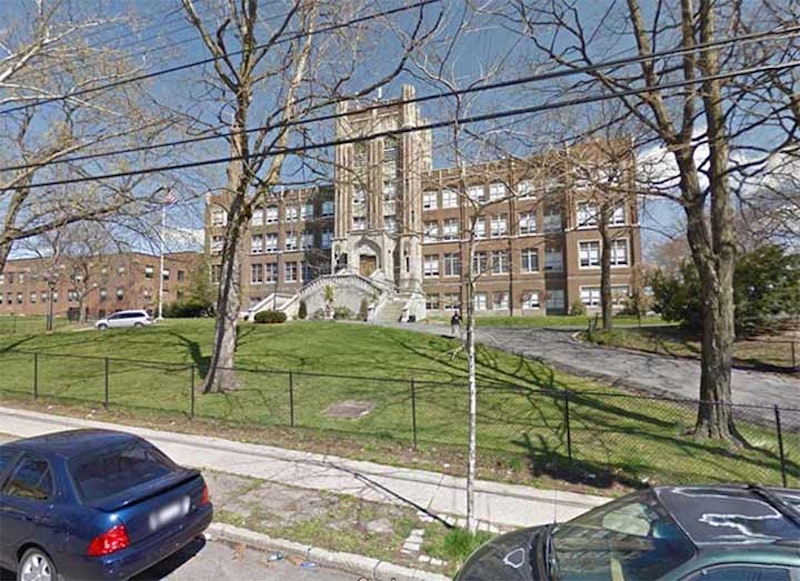The Bronx-Westchester border was much different until 1895, when it was redrawn to give what’s now in the Bronx east of the Bronx River to New York City. Today the border remains irregular, running along streets here and between streets there, above E. 242nd St., above Cranford Ave., along Mundy La. (which NYC and Mount Vernon both claim) and then east, an irregular jog north, and then east just above Pelham Bay Park (but not along its northern edge; west of the New England Thruway there’s an odd bit of business in which Park Drive, along the north edge of Pelham Bay Park, is in the Bronx but all the intersecting streets issuing north are in Pelham Manor) reaching the Long Island Sound between Hunter and Glen Islands.
Wakefield, just northwest of Eastchester, was a small town annexed by New York City in 1895. It was originally surveyed in 1855 and given the name of the house near Fredericksburg, Virginia where George Washington was born in 1732. The #2 (and #5 on weekdays) whisks you up there on the White Plains Road elevated.
Seen here on its Murdock Ave. entrance, the Mount Saint Michael School (boys grades 6-12) occupies a large plot, much of which is given to athletic fields, between Nereid, Murdock and Pitman Aves. and Mundy La. The school was founded by the Marist Brothers and opened in 1926, with the main building shown here completed in 1929. A large pond had to be filled to construct the football field. Among the school’s alumni are 1950s Knicks star Richie Guerin and rap mogul and jailbird Sean “Puffy” Combs.
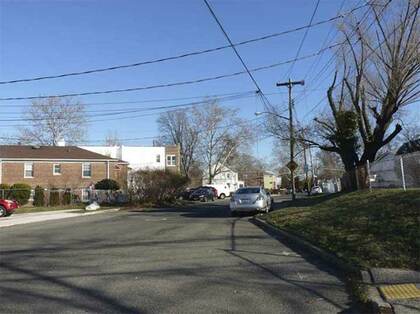
Between Wilder and DeReimer Aves., just off Bussing, there’s a short one-block alley with a bend in the middle, called Bussing Pl. As it turns out, Bussing Pl. and Bussing Ave. in the Bronx and Kingsbridge Rd. in Mount Vernon are original sections of the Boston Post Road, established in the colonial era as an early route between New York and Boston.
The original Boston Post Road was started in 1672 as a mail route between Boston and NYC (a 270-mile distance), following a network of Native-American trails. The original branched off north of the present Boston Rd. in the Bronx; its present route is marked by Kingsbridge Rd. in Mount Vernon and by Bussing Ave., Barnes Ave. and Gun Hill Rd. in the northern Bronx. The Bowery marks part of its southern route in Manhattan. For more on this pathway, take a look at Eric Jaffe’s The King’s Best Highway, a detailed history.
What about Boston Rd. itself? It becomes part of the original Boston Post Road but not until it enters Westchester County.
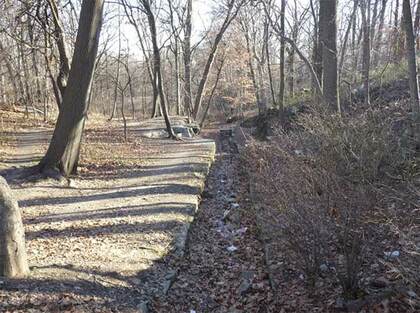
Seton Falls Park is an irregular 35 acres between E. 233rd St. and parts of Marolla Pl. and Crawford, Seton and Pratt Aves. Though dwarfed by Pelham Bay Park (NYC’s largest park) and Bronx and Van Cortlandt Parks, it’s the largest park in the immediate area. It stands on land once inhabited by the Siwanoy Indians, Thomas Pell, and the Seton family, one of whose members was Elizabeth Bayley Seaton (1774-1821), the USA’s first canonized saint (1975). It’s been formally a park since 1930, with further additions in 1932, 1983 and 1985. The east end of the park bordered on parts of the Bronx’ last frontier, as some of the streets were not laid out and built on unto the end of the 20th century.
The territory was once watered by Rattlesnake Brook, which is still captured in a concrete culvert in the park’s valley. It’s only filled with water after particularly wet weather.
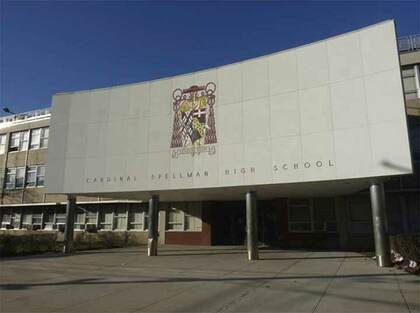
A modern classic, Cardinal Spellman High School on Needham Ave. between Grace and Baychester Aves. was dedicated in 1962 by the person for whom it was named, Francis Cardinal Spellman (1889-1967), a controversial prelate who made the cover of Time magazine and was Archbishop of New York from 1939 to his death. Spellman was a close advisor to Franklin D. Roosevelt and an ardent anti-Communist throughout his career, breaking a gravediggers’ strike at Queens’ Calvary Cemetery by installing seminarians in their place; he also supported Richard Nixon over a Catholic, John F. Kennedy, in the 1960 presidential election, citing Kennedy’s opposition to federal aid for Catholic parochial schools, and was a supporter of the war in Vietnam. In a book review, the New York Times called Spellman “guileless and Machiavellian.”
Originally a school for boys, Cardinal Spellman HS became co-ed in the early 1970s.

Pictured here is Boston Rd. and Grace Ave. The road begins in Morrisania, at 3rd Ave. and E. 164th St., and roars up to the city line at Ropes Ave. at Pelham Manor, and, as US Route #1, goes all the way to Boston. However, within NYC confines, this was not a part of the older Boston Post Road.
According to the late Bronx historian John McNamara, Boston Rd. was constructed by surveyor John B. Coles in 1794. It’s a reroute of sorts of the original Boston Post Road. Lewis Morris, an early Bronx landholder, wanted the Post Road to run through his property for the sake of his legacy and hired Coles to build a southwest extension of the Post Road. Early on, the new road was known as Coles’ Boston Road. North of what would become the Bronx-Westchester line, the two roads converged and continued north. Further north, the Post Road would separate into more tributaries, each reaching Boston via a separate route. In that era, what takes a few hours by car took a few days by horse or coach.
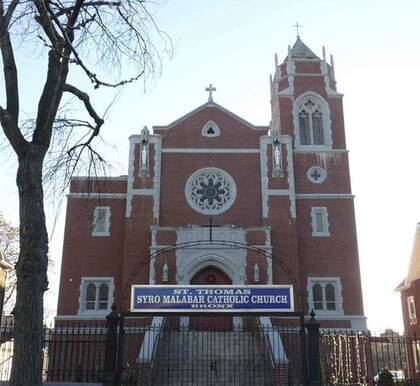
I went north on Eastchester Rd. from where E. 221st branches to the northeast. In these parts are a number of repurposed church buildings, from one denomination to another. The St. Thomas Syro Malabar Catholic Church, between Bronxwood and Barnes Aves., is part of a congregation that was by tradition founded by St. Thomas the Apostle in India in the first century AD. While Malabar is on the coast of India, the church rites follow a Syrian tradition. The Thomas Indian Christians remained isolated from Europe for centuries before the Portuguese explorer Vasco da Gama arrived in 1498, and strains arose when missionaries began to install the Latin Rite practices instead of the East Syrian rites, which had been introduced by missionaries from the Middle East. Today, the Syro-Malabar Church remains in communication with Rome despite liturgical differences.
Nearby, attesting to the area’s formerly heavy German population. is St. Peter’s Evangelical Lutheran Church on E. 219th between Barnes Ave. and White Plains Rd., which contains German inscriptions on the cornerstone (laid in 1898) and above the door (“God is love”).
—Kevin Walsh is the webmaster of the award-winning website Forgotten NY, and the author of the books Forgotten New York (HarperCollins, 2006) and also, with the Greater Astoria Historical Society, Forgotten Queens (Arcadia, 2013)

